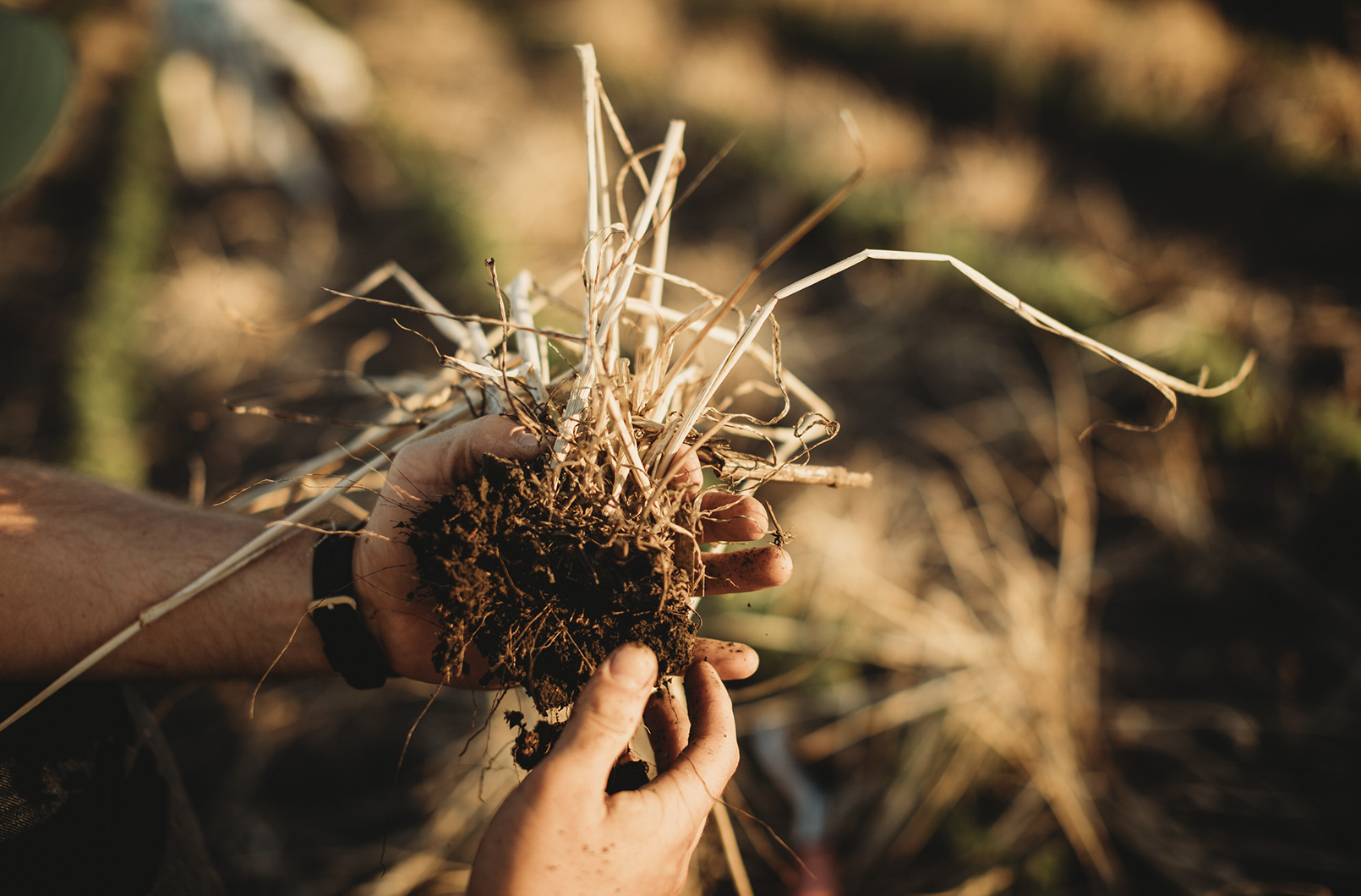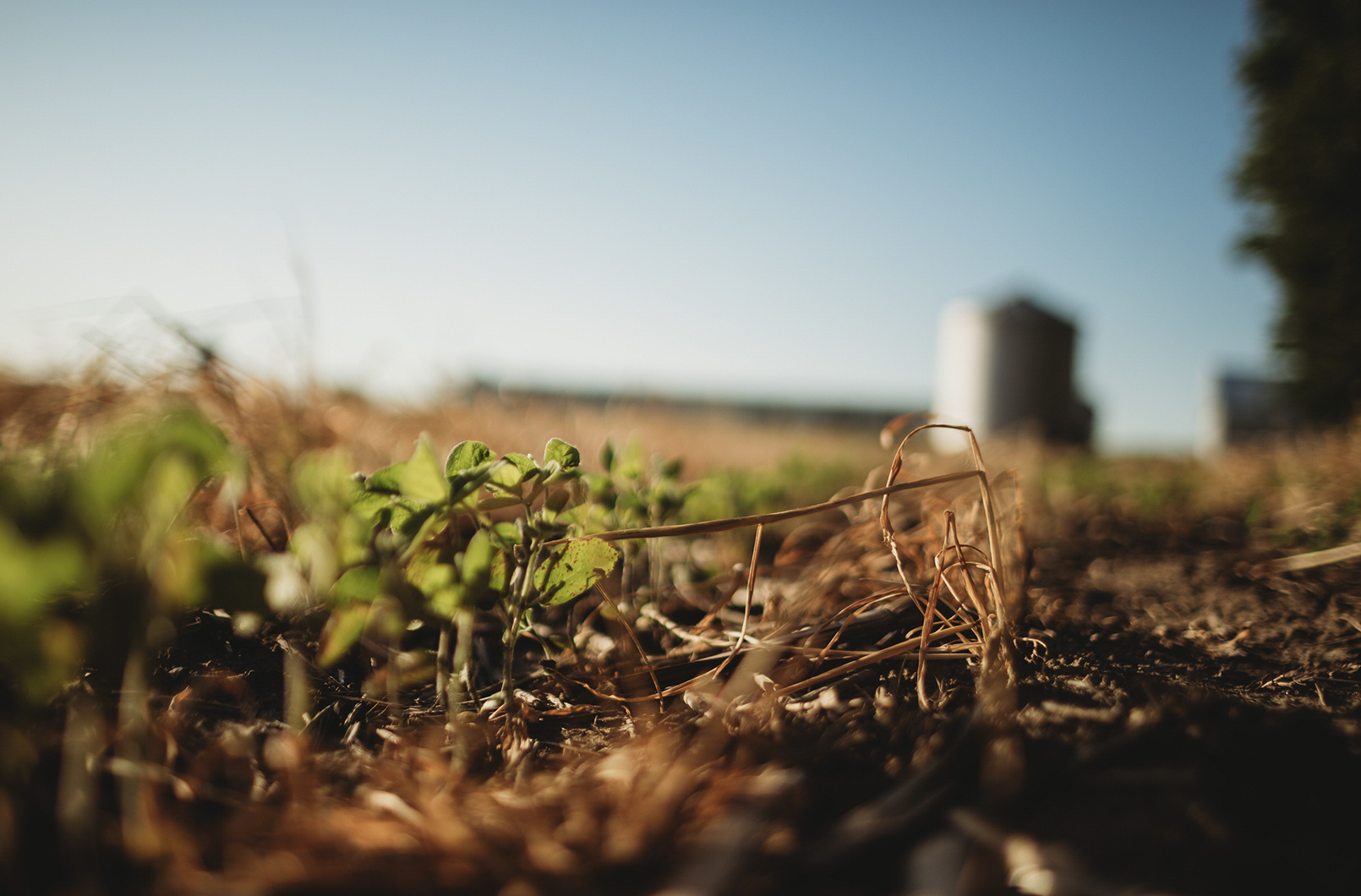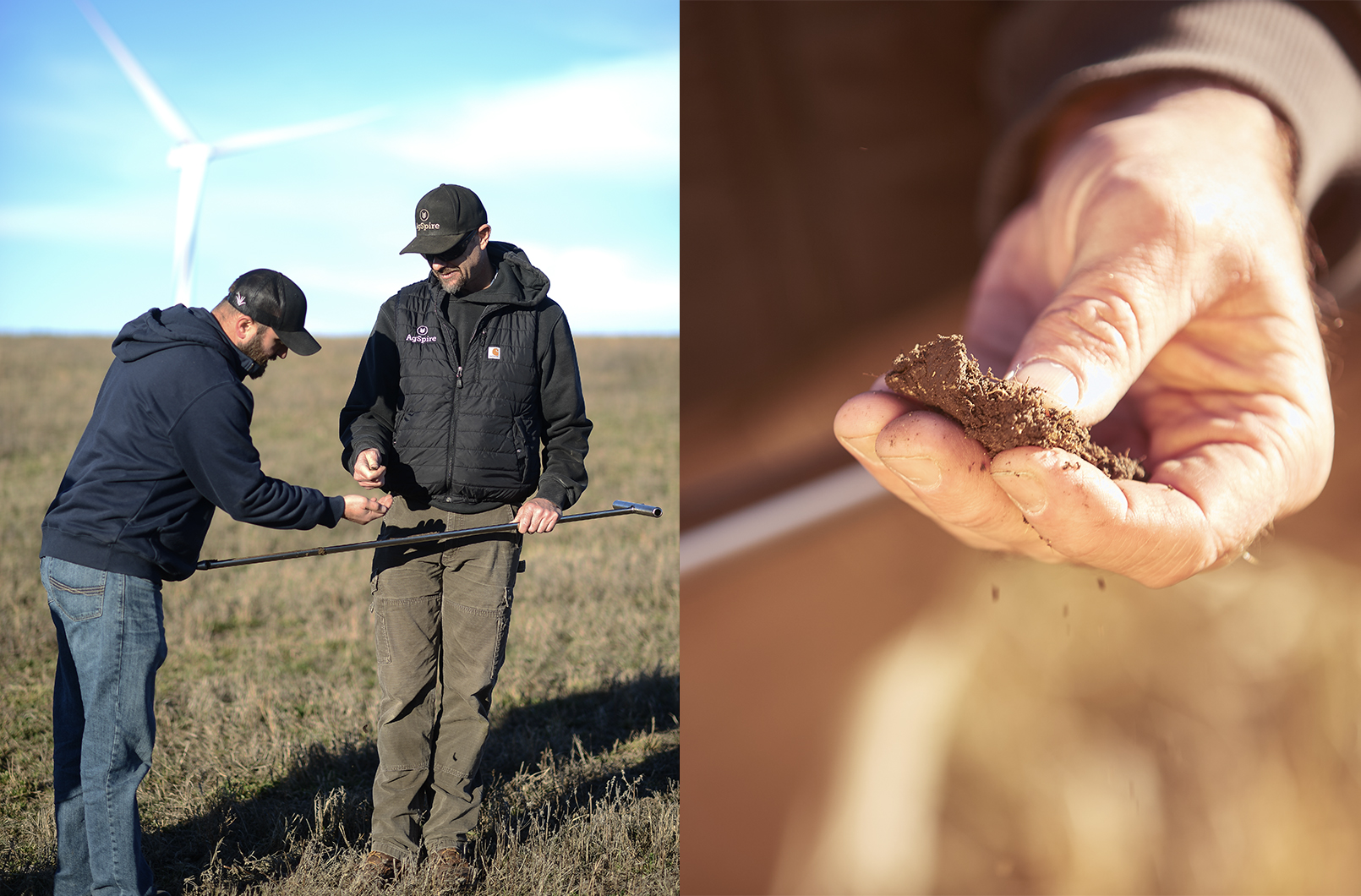
Discover how AgSpire helps farmers and ranchers improve soil health through regenerative agriculture practices like reduced tillage, cover crops, and livestock integration. Boost productivity, resilience, and profitability from the ground up.
Invest in Soil Health for a More Profitable, Resilient Operation
At AgSpire, we believe healthy soil is more than a conservation goal. It’s a powerful tool for building a more productive, profitable, and resilient farm or ranch. When the soil beneath your feet is functioning at its best, everything above it can function better too: crops grow stronger, forage lasts longer, water works harder, and your business is better equipped to handle whatever comes your way.
That’s why we help producers across the country take a functional approach to improving their soil’s productivity, addressing their operation’s unique challenges or needs.
What Healthy Soil Can Do for Your Operation
Think of soil as the engine that drives your productivity. When it’s well-tuned, it:
- Holds more water during dry spells and drains better after heavy rains.
- It also feeds itself, reducing your need for inputs like fertilizer and irrigation.
- Creates more optimal conditions to help buffer against crop stress
In short: healthier soil means greater stability and better returns.
You might see it in a thicker stand of grass, less runoff after a storm, calves gaining faster weight, or fewer hours spent replanting or chasing weeds. These are the day-to-day advantages of investing in soil health.
Core Principles of Soil Health
There’s no one-size-fits-all formula for success, but soil benefits from these principles:
- Protect the soil surface — Using residue, cover crops, or perennial plantings to shield the soil from erosion, wind, and heat keeps moisture in place and builds organic matter over time.
- Limit disturbance — Reducing tillage or grazing with intention improves the soil’s structure and helps it retain nutrients and water more effectively.
- Diversify what’s growing — Whether through smart crop rotation, interseeding, or pasture mixes, adding plant variety boosts soil biology, balances nutrient cycling, and disrupts pest and disease patterns.
- Keep roots active — Maintaining living roots in the ground for more of the year feeds soil microbes and builds fertility naturally.
- Integrate livestock — Where it fits, livestock grazing can help cycle nutrients, improve plant growth, and add long-term fertility to your soil.
These aren’t new ideas. They are the 5 Principles of Soil Health – a time-tested and research-backed way to think about soil improvements as a natural system.

The Unofficial 6th Principle: Patience
Although these practices work in unison to rebuild soil health, the results from these practices do not express themselves overnight. When agricultural soils have been considerably degraded, it can take many seasons to fully see the benefits from these principles and practices. “As farmers and ranchers, we need to remember, ‘Rome was not built in a day.’ The relationships between the microorganisms that call the soil home take time to redevelop,” said Senior Conservation Agronomist and CCA Derek Ver Helst.
He continued, “To understand this concept, let’s use an earthquake as a metaphor. The day after a devastating earthquake, the region will not be at full capacity. They are in survival mode, cleaning up after the disaster. It will take years for the region to rebuild and regain its functionality.
“The same can be said about the soil. Full tillage, for example, destroys the soil structure, acting as a kind of ‘earthquake’ for beneficial microbes in the soil. It renders the microbes shelter-less. Plus, without a growing root in the soil as all times feeding the microorganisms, they don’t have the energy needed to rebuild. Through practices that impair these microbes, we have effectively stopped the soil from functioning the way it was intended to.”

Start Where You Are
Every acre is different, and every producer faces a unique set of decisions. One thing holds true across the board: when you invest in the health of your soil, you’re investing in your operation from the ground up.
At AgSpire, we’re here to help you take the next step. Whether you’re just getting started or looking to scale what’s already working, our team can work with you to build a plan that fits your land, your goals, and your bottom line.
Ready to get started?
Reach out today and let’s talk about how we can support your soil — and your success.